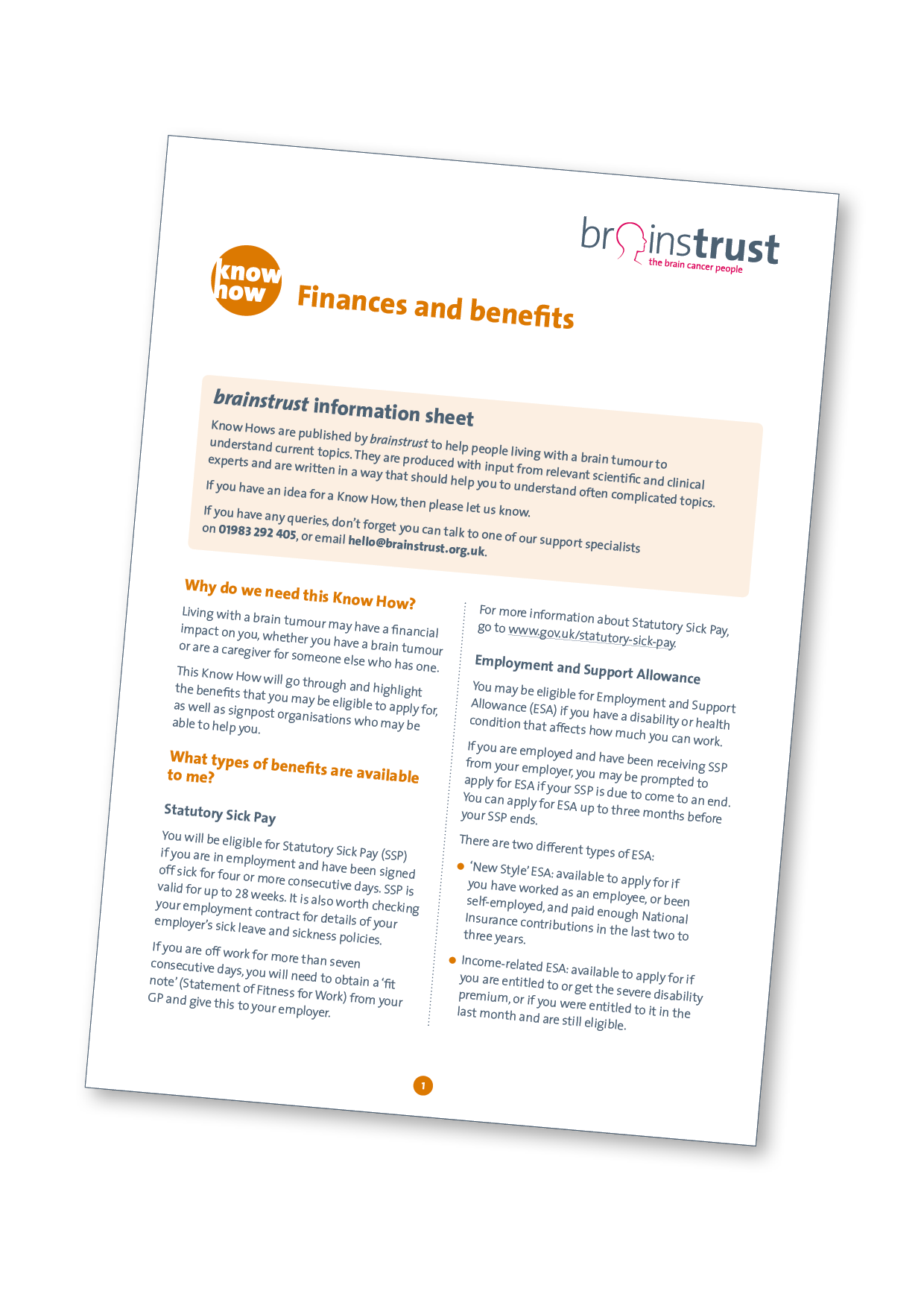 We know that life may feel unsettling at the moment for a variety of reasons. Our previous blog post includes tips about living with uncertainty, and we wanted to continue the focus, this time concentrating on the cost of living crisis. The rising prices of fuel, energy and food are arguably challenging for us all, but having a brain tumour diagnosis in your life can make everything much harder to deal with.
We know that life may feel unsettling at the moment for a variety of reasons. Our previous blog post includes tips about living with uncertainty, and we wanted to continue the focus, this time concentrating on the cost of living crisis. The rising prices of fuel, energy and food are arguably challenging for us all, but having a brain tumour diagnosis in your life can make everything much harder to deal with.
This blog post aims to serve as a resource of links and support – both from our own website, and others – which you may find helpful. Don’t hesitate to get in touch if you’d like to speak to one of us; we’d be happy to help further.
Know more with our Know Hows
Our Know Hows are quick-read information sheets which you can download from our website here.
Our Money Worries Know How is a great place to start if you’re feeling overwhelmed (as is the Dealing with the Overwhelm one!). It covers practical steps you can take to gain more clarity on your financial situation, like ‘chunking’ down the anxiety. As well as guidance on investigating where you could apply for reductions in taxes, or benefit support. Our Money Matters page is also a good starting point, detailing all our relevant financial support.
Welfare and benefits advice
Eric is our brilliant brainstrust benefits advisor. Whether it’s support with making an application, or filling in a form, a chance to check that you’re receiving all you can and should be, or simply a not knowing where to start, if you feel you need to speak to someone one-to-one, Eric will be happy to help. Feel free to contact us and we can put you in touch with him. You can also search for benefits advice – and other services – in your area, via our handy Brain Tumour Hub.
Financial fail-safes
Head to the cost of living section on Gov.uk to find out about the available support relevant to you, whether that’s bills and allowances, income and disability benefits, or housing and travel advice. Turn2us is a national charity offering practical help if you’re struggling financially. They offer information about benefit entitlements, available grants, help with energy and water bills, and ways to speak to a local advisor. It’s also fair to say that Martin Lewis has been a guru on money matters so far. His website, MoneySavingExpert, details 90+ ways to make the cost of living crisis slightly easier.
Available grants
There are several organisations offering grants to those in need:
- The National Benevolent Charity provides grants to individuals facing hardship
- Buttle UK and Young Lives vs Cancer’s Crisis Fund assist families with children, and young people.
- To help with the extra costs that having cancer brings Macmillan also offers one-off, means-tested payments of £350.
For a list of other available grants, head to Buttle UK’s website.
Fuel support
Regardless of your energy provider, the British Gas Energy Trust is an independent charitable trust which can help in making sure you’re receiving the benefits and services you’re entitled to. Their Bounce Back Checklist can help you maximise your income, detailing lots of local schemes and programmes to assist with energy bills advice.
Food and the day-to-day
Food campaigner Jack Monroe’s blog, Cooking on a Bootstrap, gives some fantastic recipes that are quick, easy, and – importantly – cheap, while also minimising waste. Check out the Community Fridge Network too, to connect with others in your local community and share food, learn new skills and reduce food waste. Supermarkets and local businesses and producers share their surplus, making sure it goes to good use. For more money-saving ideas, take a look at the Extreme Couponing and Bargains UK Facebook group. If you’d like to get your head round how different household appliances may be contributing to your energy bills, try out this comparison tool.
A Positive Note
To end on a high, the Cost of Living Archive on Positive News is great to scroll through if you’re wanting some hopeful, optimistic content to consume. Expect positive stories about local initiatives which assist communities with cost of living-related issues.
We’d love to hear from you. Do you have any top tips to share, or know of other grant-providers or financial services that are helpful in these challenging times? Let us know by dropping us an email at hello@brainstrust.org.uk.
Feel well-resourced and in control – sign up to our mailing list to receive all the latest news, events and resources straight to your inbox.











